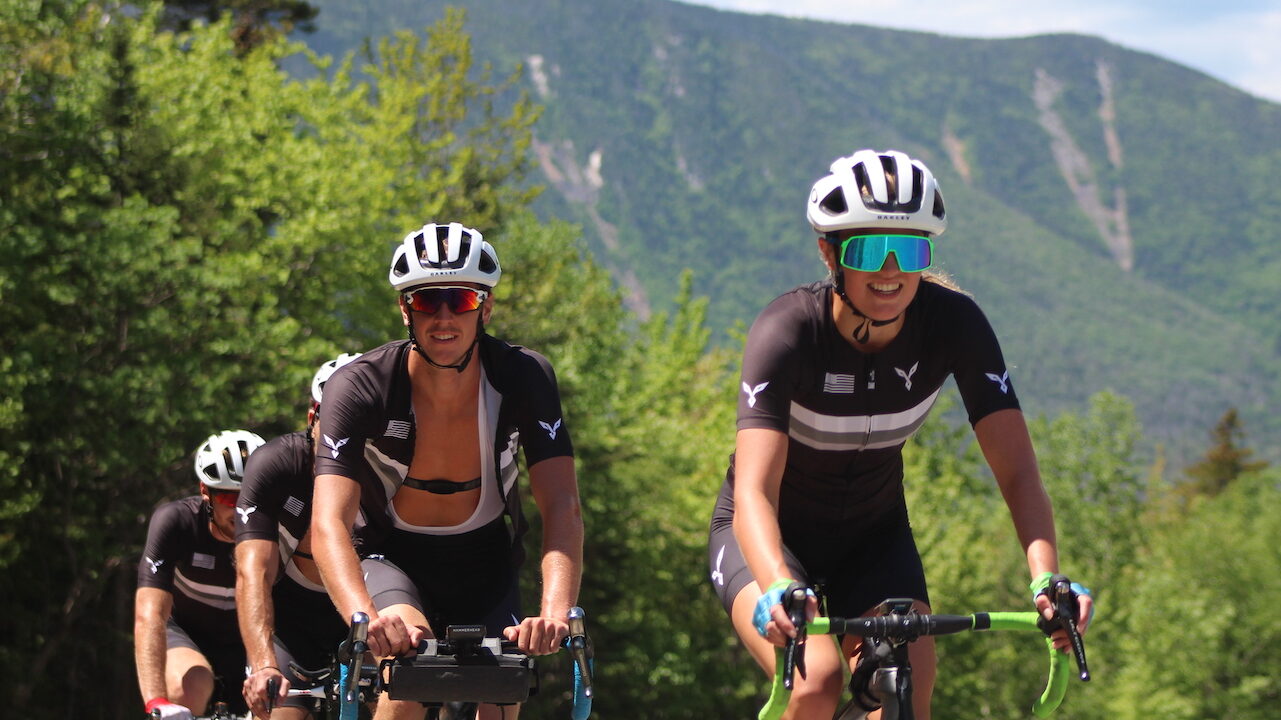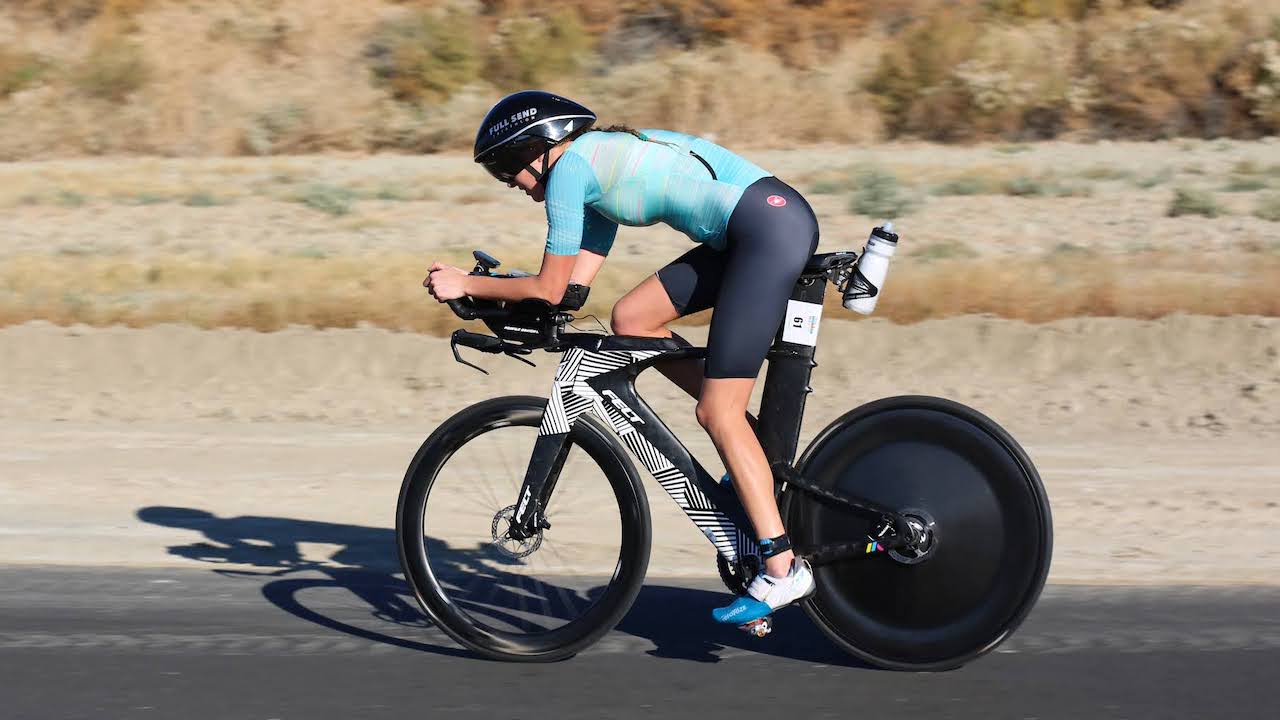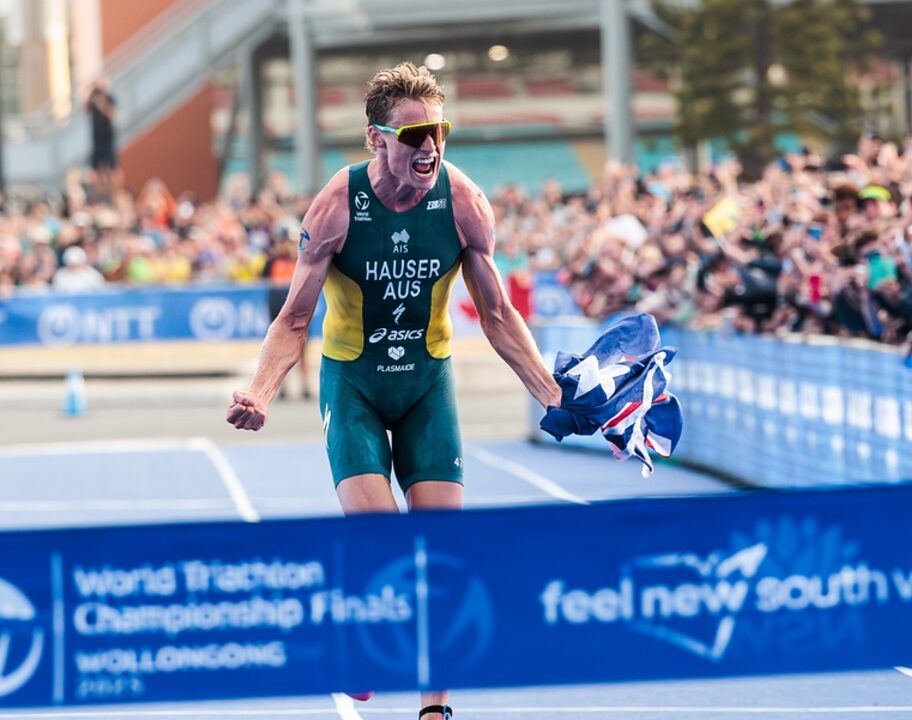In part one of our interview with Ali Brauer, we looked into the background – academic and sporting – which led her to firstly find the sport of triathlon, and then seek to perform on the professional circuit.
We pick up the story in late 2017, when Ali first connected with her coach, James Petersen, at a time when she decided to leave her PhD program. Her mental health at the time was at a low ebb – and sometimes you just have to go with your gut instinct.
From Facebook stranger to coach
“James is from New Hampshire, and his team was based in New Hampshire and he was also the USA Triathlon collegiate Chair at that point. He had friended me on Facebook and I don’t normally accept friend requests from strangers, but I thought ok, this guy seems legit.
“He put out Ads in the summer and fall 2017, for his first full-time daily training environment in Ipswich, Massachusetts which was to be held in the summer of 2018. I was still in school and still intending to finish my PhD and so I didn’t really think twice about them, but once things started getting really bad at school and I decided to leave I remembered those Ads.
“I didn’t really know what to look for in a coach or a training group, but it just seemed like a good idea to put myself in an environment where I would be working with other athletes and with a coach hands-on every day.”
Rolling the dice
“I ended up applying and getting the last spot available in the summer of 2018. This was a two month camp and he was planning to extend it into a full-time environment, so I moved from Boulder out to New England in June 2018 – packed up my car, brought my cat – I didn’t know how it would go, but also with no plans to leave.
“I’m not usually a risk taker – this is probably the biggest risk I’ve taken in my life – I just had such a bad experience at school and I knew that this was what I wanted to do. I just went all-in from the beginning.
“It ended up working out. I love the team, I did decently well in that first summer and I had a couple of decent ITU results. I got two sixth place finishes in Continental Cups and a fifth place at the New York City Triathlon which is a non-draft Olympic, so things were going well.”

Progress
While making the ‘all-in’ move may have been a risk, there was clear progress from the start.
“Honestly, looking back those results feel like flukes because it felt like I didn’t know what I was doing at the time. I guess it was a sign of good things to come.
“Ever since April 2019 I’ve been based in Bedford, New Hampshire. That’s our main training location for around six months of the year. Then we go to Florida from January through to March, avoiding the cold and snow. We have a group of around seven athletes, all relatively young Pros in our early to mid-20’s.
“It’s been kind of cool being a part of this from the very beginning as there aren’t very many full-time training environments in the US. Seeing my coach James build that from the ground up, and the amount of sacrifice and resources it’s taken has been pretty cool. It’s a good environment to be a part of, to have people to push you on a daily basis who also have similar goals.
“I was the only female for several pretty long periods of time, so I was really chasing after the guys and while some people might not see that as ideal, I didn’t mind. In my view they are just as good or better than the top females out there and so it’s great to be able to chase someone, whether they are male or female.”
When injury strikes
If there is one word that any athlete doesn’t want to hear, it is ‘injury’. Unfortunately for Brauer, dealing with that has been an unwanted companion in recent years.
“The injuries are a pretty big part of the story, so after those good results in the summer of 2018, I was putting in a good training block over winter 2018/19 and in February I had the first of a long line of injuries. I had stress fractures in college – and I was an idiot really – as I chose not to have imaging done on it, so it got misdiagnosed as a soft tissue injury.
“I raced on it a couple of times and just kept on taking time off and trying to come back and it just wasn’t really getting better. This went on for the majority of the year, to the point that I had a kind of pain that I immediately recognised as a stress fracture. I got an MRI and you could see multiple stress fractures in my foot. I was almost like I broke my entire foot.

“I remember them saying I had a bone stress injury in seven different areas of my foot. It was one of those things where you think, is my career over? It was a huge punch in the gut and really hard to cope with.”
New opportunities
“At the same time, I was swimming and cycling a tonne that year and I saw huge gains. I was putting out some power numbers in my cycling workouts where we thought that if I chose to do long course, I could be pretty competitive.
“It was getting to the point where I could potentially break off the front in a Continental Cup race, but we felt that long course would also suit my personality and physiology as something of a diesel engine. Those long, grinding efforts are more in line with my strengths – but it really took the injury to actually make that switch happen.
“Even though my run was pretty weak at the time, I could use my swim and bike, whereas in ITU it’s really hard to make a break, they sometimes don’t stick and it ends up being a run race – the reality was, and still is, that I don’t have the speed to compete at high levels on the run.”
Fast progress
One of the things I noticed was that while Ali has a background in swimming and running through her school and college days, cycling was a relatively new addition. Despite that, her results to date suggest it is already something of a strength with surely more improvements to come.
“I really did not touch a road bike until I was 23. It was completely new when I started triathlon, but I think because I had that big aerobic engine from swimming and running, it did come pretty quickly. My first year in the sport, I was pretty middle-of-the road, but I really saw the gains when James started coaching me.
“He has proven to be really good at training cyclists and even trains a female Pro cyclist who is part of the EF Education-Tibco-SVB team. He has a really good track record and has really helped me get to the next level. Having that time off of running has really helped me make that big jump, so is kind of the silver lining.

“Generally I’d say I think a lot like a time trial cyclist would. I’m very detail-oriented and have always had a good feel for how to ride with things like changes in terrain and ride smoothly, that’s something that came pretty naturally to me.
“Also, I haven’t done a huge amount of volume yet. I’ve never done a 100-mile ride and my coach always says that he hasn’t used all the tools in his toolbox yet on the bike. I do feel like I have a lot of untapped potential and that’s something that I’m really looking forward to improving in the years ahead as a long course athlete.”
A new approach
In a similar vein to my chat earlier in the year with Sophie Coldwell, another cycle of injury and training interruption led to something of an ultimatum – to truly get to the cause of the issues, and find a way to progress with consistency. Otherwise, a change of career was on the cards.
“After getting that MRI, I came back from that in 2020 and was able to train most of the year. Obviously there wasn’t any racing because of COVID, which allowed me to put in a big consistent block and I got back up to pretty consistent running… but I actually got another stress fracture in Dec 2020/Jan 2021, and it was one of those things where I kind of felt like my back was against the wall. If we don’t figure this out and get some results this year, I might have to consider taking a step back from the sport and maybe getting a full-time job. My body just wasn’t holding up, so we put a tonne of focus into getting to the bottom of all those injuries.
“Eventually we put together a lot of details on why those injuries were happening in the first place. First of all they were all in my left foot, which is odd. I have limited dorsiflexion in my ankle. My coach is watching my form regularly now, taking videos etc. We made some changes to my training and lowered my mileage even more.
“In 2020 I wasn’t doing more than 30-miles/week, and in 2021 I typically only ran about 20-miles/week during the race season. We basically don’t run on back-to-back days. We don’t do super high intensity running, as often intensity is the culprit rather than volume, and I do multiple runs off the bike during the week as a good way to build strength rather than running more.”

Health first, second and third
When I spoke to Ali she was tired – but the sort of tired you look for as an athlete, because it means you are in a solid block of consistent training. That’s a positive for the year ahead.
“We implemented all of those and I stayed healthy during 2021, and am still healthy, which was the number one priority. It was health above all else this year, even race results.
“That I was able to do six 70.3’s and do six half marathons – when I didn’t run beyond 10-miles in training – was beyond my expectations. My run splits are not what they need to be to be truly competitive or what I’m capable of, but in the wider context, I have to be happy with what I was able to do in 2021.”
in the final part of the series, we’ll focus on Ali’s 2021 season and how she plans to approach 2022.
Ali Brauer TRI247 interview:
- Part 1: From ‘maths nerd’ to Pro triathlon
- Part 2: ‘Biggest risk’ pays off
- Part 3: Talking 2021 and new season targets





















